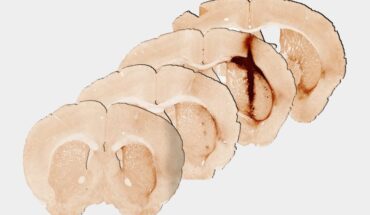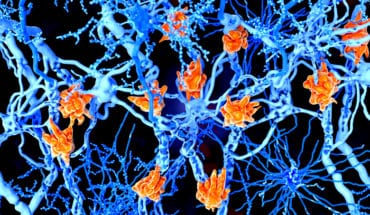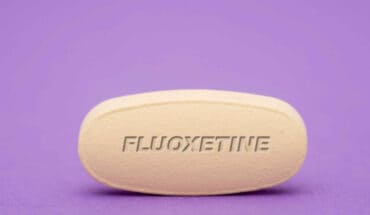We are living in The Aluminium Age. Throughout the history of humankind we have lived through various ‘metal ages’ including the Iron Age and the Bronze Age.
Towards the end of the nineteenth century there was arguably one of the most important technological advances of the modern era.
A method was developed to make aluminium metal, and henceforth myriad aluminium salts and compounds, from the abundant aluminium ores which constitute the Earth’s crust.
A method was developed to make aluminium metal from the abundant ores which constitute the Earth’s crust.
This landmark discovery changed aluminium from being considered as a rare and precious metal, with a similar commercial value to gold, to a metal which was cheap and abundant, and this was the event which heralded the advent of The Aluminium Age.
It is indisputably true to say that the evolving modernity of the last and present centuries could not have been possible and will not continue at its current pace without aluminium metal and all of its salts and compounds. All recent forecasts predict a burgeoning use of aluminium over the next decades with the majority of the increase in use coming from new extractions of its ores and not recycled metal. It is the lightness of aluminium metal and also the reactivity of the free soluble aluminium ion which make aluminium the most adaptable of metals and which confer its many properties through myriad applications. For example, no other metal could be used to make the fuselage of an aeroplane while being the active ingredient in an antiperspirant and also the colouring agent used for a child’s favourite sweet. No other metal shows such a degree of versatility and no other metal, perhaps in history, deserves an ‘age’ like aluminium!
No other metal shows such a degree of versatility.
Aluminium has (literally) fuelled the last hundred years of economic development in the developed world (it was a component of the fuel which propelled the Space Shuttle into space and it was used to make the heat-resistant tiles which prevented the Space Shuttle from burning up upon its re-entry into the Earth’s atmosphere) and aluminium will continue to provide impetus for economic and social change for decades to come. Aluminium is both inherent in and intrinsic to our future and it is inextricably interwoven into the lives of us all. We have reaped the rewards of the aluminium age and it has been a burgeoning harvest for good but is there also a downside an Achilles heel to its clear and widespread benefit?
Intriguingly, within just decades of the advent of The Aluminium Age, at the beginning of the twentieth century, a significant body of scientific research and medical reports began to question the safety of aluminium compounds in humans. One might say that a controversy was born in the early part of the twentieth century. A controversy that centred primarily on aluminium products and specifically aluminium utensils used in cooking. Almost immediately aluminium was identified as a putative aetiological agent in a range of human conditions including heart disease, brains diseases and cancer. Perhaps these events could be interpreted as having heralded what now should be known as The Aluminium Tyranny, an entirely juxtaposed position to The Aluminium Age, and an ultimately and currently successful campaign by the global aluminium industry to consistently deny the possible consequences for human health of living in The Aluminium Age.
The alchemy of aluminium that resulted in its biologically benign ores being turned into the myriad aluminium products which together define The Aluminium Age could be considered as forbidden by nature just as the transmutation of base metal to gold or silver is also forbidden. Aluminium is the most abundant metal in the Earth’s crust and yet, paradoxically, aluminium has no biological function neither in extant nor, to our knowledge, extinct organisms. Aluminium is neither essential nor beneficial to life’s processes. The latter, of course being distinct from the use of aluminium to make living easier and better for humans. All of the evidence points towards the conclusion that biochemical evolution proceeded in the absence of biologically available aluminium and that this was because the unique inorganic chemistry of its geochemical cycle ensured that little if any aluminium passed into the biotic or living cycle. Nature provided the perfect example of how to continuously recycle the third most abundant element of the Earth’s crust over hundreds of millions of years without losing any aluminium to the burgeoning life which was evolving on Earth. This is truly one of the seemingly miraculous circumstances of our planet which, along with many others, resulted in a living planet. However, the processes of natural selection which have governed geochemistry and biochemistry alike for the majority of Earth’s existence were neither fine-tuned nor optimised in the presence of modern human beings.
For example, the Earth’s atmosphere was not prepared for the industrial revolution and the massive burning of fossil fuels and the subsequent acidification of rainwater, the phenomenon which is now known as Acid Rain. As a result we find that not all of the Earth’s surfaces or catchments have successfully buffered this additional acidity. The concomitant acidification of soils has released aluminium from its inert edaphic stores into the aquatic environment and the now free, soluble aluminium ion has reacted with tree and plant roots or with the gills of fish. The now, biologically available aluminium has reaped havoc with their respective biochemistries and produced the forest declines and fish kills which are now typical of regions impacted by Acid Rain.
Similarly the Earth’s soils were not prepared for agriculture and especially intensive agriculture where crops systematically purge soils of their natural minerals and in doing so create the acid soils which today constitute 30% of the Earth’s arable lands. Again, the acidification of soil environments releases the free and biologically-reactive aluminium ion and concomitantly the acute toxicity of these soil types to most crops. It should be the case that the known and widely accepted ecotoxicity of aluminium is a red flag warning humans about what can happen when a previously biologically unavailable metal becomes an unavoidable part of ongoing biochemical evolution. However, these examples of how human activities have unleashed the toxicity of aluminium on the Earth are dwarfed by a further example of human intervention in the biogeochemical cycle of aluminium, the extraction of aluminium metal from its inert ores.
This event, which we have already acknowledged heralded the advent of The Aluminium Age, was concomitant with an immediate and burgeoning increase in human exposure to aluminium. The human race has inadvertently agreed to participate in a clinical trial to assess and understand the toxicity of human exposure to aluminium. This is an experiment which is, of course, ongoing as I write and you read this essay.It is an experiment which has neither been submitted for independent peer review nor received ethical approval. Aluminium products occupy what must be an almost unique position in that there has never been any requirement by neither the aluminium industry nor the users of aluminium in its many forms to demonstrate that these products are safe for human use. In many ways this complacent approach to aluminium underlies its pervasiveness and has acted as the catalyst for its continuous and burgeoning use over more than a century. Of course, the other consequence of letting the aluminium genie out of the bottle is that it has grown far too large to ever be returned.
There is almost no dispute between scientists or industrialists that aluminium is an ecotoxicant or that aluminium has been responsible for rare cases of toxicity in humans, such as, for example, being the causative factor in dialysis encephalopathy where aluminium was inadvertently titrated into the brains of individuals receiving dialysis. Where there is contention is in the role of human exposure to aluminium in diseases such as cancer, diabetes and neurological conditions. One might have expected that after one hundred years of an ongoing controversy that some resolution and consensus opinion would have been achieved. We should now be living and prospering in an aluminium age where aluminium is used not only effectively but also safely. Herein lies the tyranny of aluminium and the most significant example, almost certainly in history, of politics limiting the advancement of an area of science.
While it is indisputable, if not practically proven, that there is at least one atom of aluminium in every cell in every human being we do not know the consequences for human health of the body burden of aluminium. While there are thousands of scientific publications over many decades demonstrating the toxicity of aluminium in all living things the larger questions concerning aluminium and common human diseases such as Alzheimer’s disease or diabetes remain unanswered or at best equivocal. These questions remain unanswered primarily because neither the global aluminium industry nor governments which have allowed the unfettered growth of the use of aluminium products are prepared for an answer. Try to imagine the immediate and short term economic consequences of human exposure to aluminium being directly linked as causal or even contributory in just one disease, for example Alzheimer’s disease.
The ensuing chaos and stock market crashes would be unpalatable but they would just be the beginning of a world which would now have to change to address and accommodate such knowledge. Now that the tip of the iceberg has become visible the remainder would have to be investigated and the inevitable consequences of human exposure to aluminium would be revealed, piece by piece, and a new jigsaw of life on Earth would slowly be pieced together. Of course, if the aluminium industry were not so determined to prevent The Aluminium Question from being answered then the outcome might be so different with human exposure to aluminium being shown to be largely benign.
The Aluminium Question will, of course, be answered; it is simply a matter of time. However, in the meantime, new research while continuing to implicate aluminium in human disease is at the same time also offering solutions to living safely in The Aluminium Age without the need to suffer the consequences of biologically available aluminium. If I can take you back to aluminium killing fish in acid waters, one of the consequences of Acid Rain, it has been shown that these deaths can be prevented by introducing soluble silicon to their environments. Silicon is the Earth’s answer to the toxicity of aluminium and it can also be as effective an answer to aluminium toxicity in humans. Of course the proviso to this is that we must all, scientists, governments and the global aluminium industry, first acknowledge the potential toxicity of living in The Aluminium Age!
- Infant vaccines - 23rd April 2021
- Imagine you are an Aluminum Atom - 5th November 2020
- Aluminium in human brain tissue - 8th May 2020






